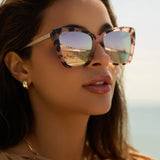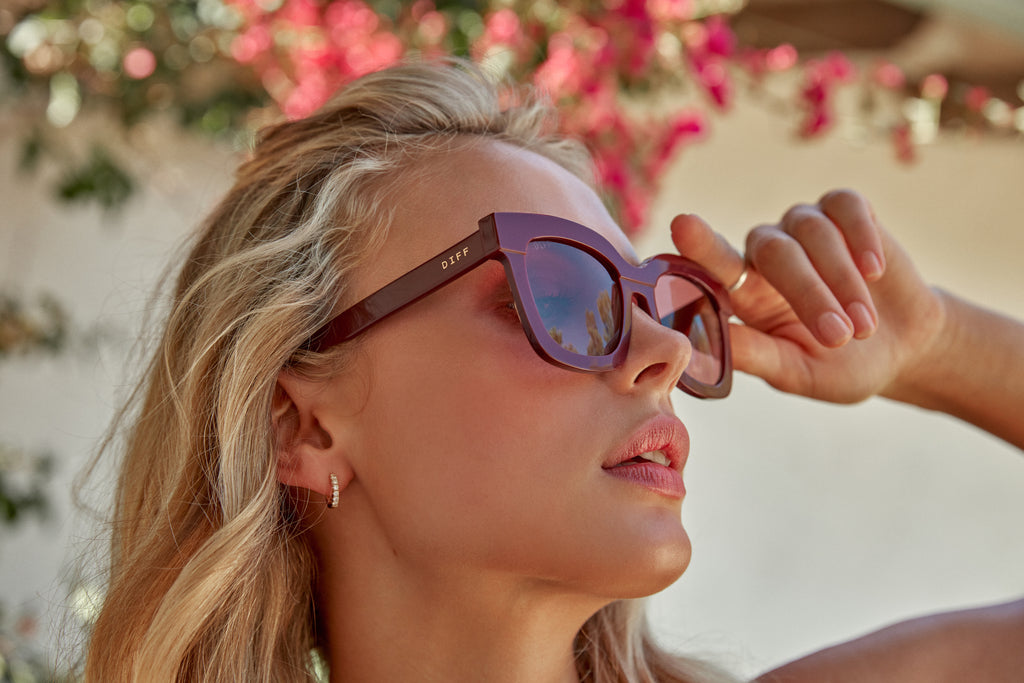Let's get you into something nice

Our hottest styles!
Check out the latest trends in our Sunglasses for Women collection
FREE SHIPPING ON ORDERS $140+
Let's get you into something nice
Check out the latest trends in our Sunglasses for Women collection
FREE SHIPPING ON ORDERS $140+

Just like human faces, sunglasses and eyeglasses come in all different shapes and sizes, and finding a perfect fit could mean breaking out your ruler.
Even with virtual try-ons there is some risk of choosing the wrong glasses measurements or glasses size when you’re shopping online. Your best best is to get eyeglasses measurements down to the millimeter (mm) to ensure the best size for your unique face.
Here’s how:
There are three major measurements to consider when you’re shopping for the perfect glasses size. If you already have a pair of glasses that fit well, you can probably find a set of three numbers on the inside of one of the temple arms.
This eyeglasses measurement is the widest horizontal point on each individual lens. You want to make sure that the width of the lens is big enough that your eye lines up to the center of the lens.
If your lens width is 51mm or less, you’ll want to shop for narrower lenses. Some of our classic narrow styles include the Sawyer, Maxwell, and Jaxson.


Some wider frames (52mm and up) that we love? The aviator-inspired Lenox and cat-eyed Becky II.
This glasses measurement is for the horizontal piece that connects the edge of one lens to the other, and rests on your nose. The mm measurement of this piece taken across the top of the eyeglasses. The idea is to have a bridge width that allows the glasses to rest on the top of your nose, not slide down.
This eyeglasses measurement is actually two in one. Using the “arms” of your glasses (the stems that sit atop your ears) your first measurement starts at the hinge of the glasses — where they connect to the frame — just to the top of where they start to bend. The second measurement is from the top of that bend to the bottom tip. Add these two glasses measurements together for the total temple arm length.
Now that you know the basic measurements to look for in a pair of eyeglasses or sunglasses, you can take a soft tape-measure and check to see if any pair of glasses you’ve had your eye on (pun intended) would fit well on your own face.
Some questions to answer first:
Does the lens width accommodate the shape of your eye and put your iris at its center? Will the bridge fit nicely on your nose or be too loose or too tight? Will the bend in the temple arms sit comfortably on your ear?
And here are some additional tips for finding the most complementary eyeglasses shape and size for your particular facial features:
Now that you’re a pro at eyeglasses measurements, check out some of DIFF Eyewear’s best sellers here.